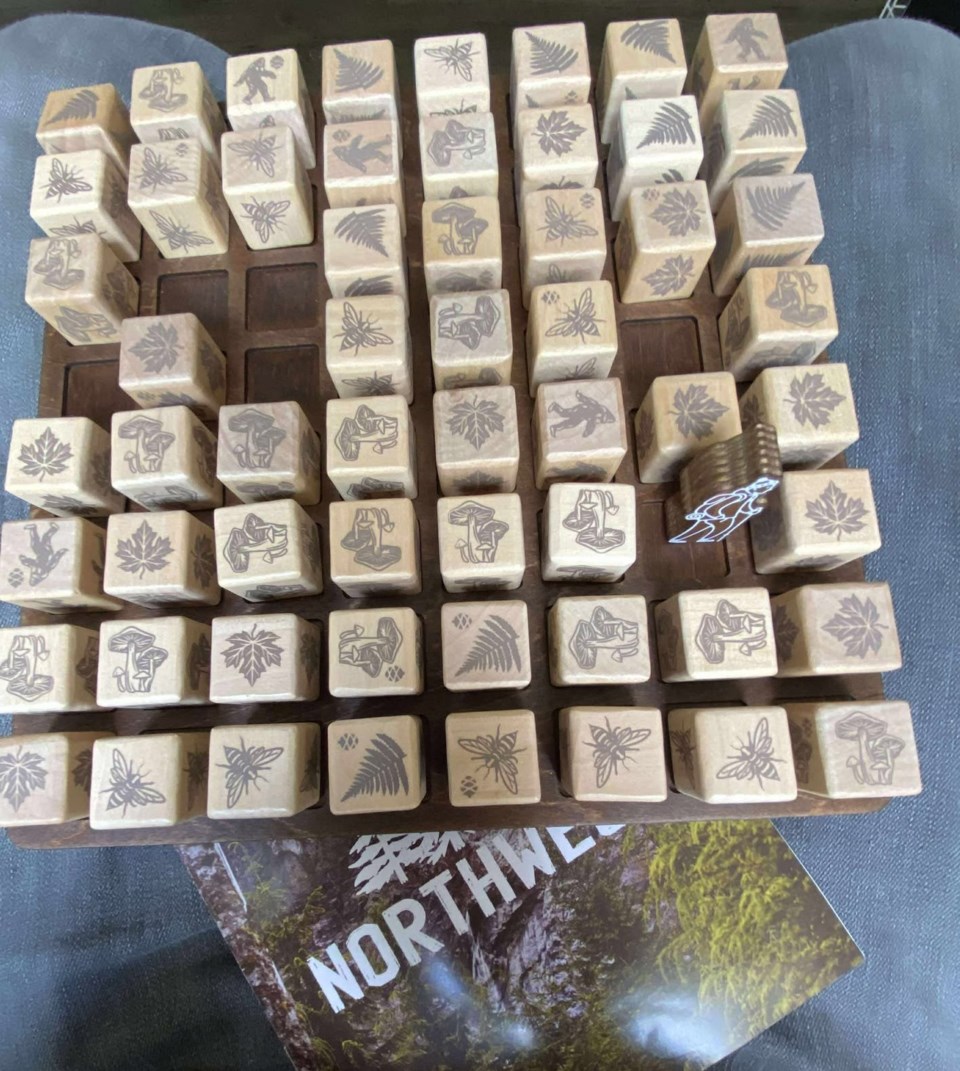YORKTON - So with July’s arrival we’ll offer up two reviews for the month to celebrate summer.
When you see Northwest on a shelf, you will note a rather plain, yet surprisingly attractive forest scene, unassuming yet likely to draw you in.
If you were wise enough to buy this one from designer Rick Hou and Brickhouse Games you are in for a treat.
It starts as you crack the box open and find a wooden board. No not high quality oak, buy nicely done with a dark stain.
You will also note the board is recessed to allow 64 cubes to be neatly, and board bump securely – a definite nice touch.
The recesses are for the 64 cubes in the game, which are also wood. These are chunky cubes with nice art, so when randomly spread across the board would have a visual winner – the sort of board which begs to be out on the coffee table to entice visitors to ask about it.
From the good looks the question of course is does play match.
Well, Northwest is a 2-to-4-player tableau-building game which will remind of Azul in as much as you gather pieces and set them on your own board in patterns to collect points at game’s end. Yes comparing a game to Azul is a big deal since Azul is a top game for many – us included – but Northwest has a similar ‘feel’.
Each turn, the player drafts a cube from the board by moving the shared ‘exploration token’ onto the cube and adding it to their tableau. The previously captured cube sets the next player’s available move – this is the biggest drawback to Northwest, a near constant having to ask just what cube the previous player took, because casual gaming you just aren’t watching that closely.
• Bees/Honey: next player must move in the L-Shape think the knight move from Chess.
• Mushrooms: next player must move into a space in any of the eight surrounding spaces - like a chess king.
• Ferns: next player moves one orthogonal space.
• Maples: next player moves one diagonal space.
• Bigfoot: next player may move into any space in the same column or row.
Each of the cube types score victory points in a unique way. For example, a mushroom just scores one point no matter its tableau position. Other cubes need to meet certain criteria to score. The bigfoot scores best at five points, so you want the elusive beast.
“This is ultimately a drafting game where the strategy lies in when and what you draft. Game play lasts anywhere between 20 to 40 minutes. The wood and paper components lend the game a natural feel, and we’ve received numerous positive comments on the quality and tactile nature of the cubes. While the design may seem simple, it possesses a quiet elegance in its table presence,” said designer Hou via email.
A handy player aid for each participant keeps the movement patterns and score conditions close at hand.
“Ultimately, I wanted to create a game with broad and long-lasting appeal. I wanted something that people could easily learn and bring to the table regularly with family and friends, while still providing meaningful choices. I am a mechanics-first designer, so I started imagining different abstract mechanics that would provide a fun and strategic interplay among players, accommodating up to four. The theme came later. We live in the Pacific Northwest and are regularly inspired by the beauty of this place and the creativity and kindness of the people here. We’ve been fortunate to be part of a community of passionate designers, publishers, and distributors who support one another. For my first game, I’m glad to honor the Pacific Northwest and share a piece of what we love with those both in and outside of the region,” explained Hou.
“Like any good drafting game, it provides immediate tension between what you want for yourself versus what you leave behind for others. But the drafting in Northwest is achieved through two spatial puzzles - one on the main board and one on your personal board. Players share the same hiker pawn as the primary method of collecting what they want. Then they will decide how to best position the collected item on their personal board to optimize their score.”
Now Guilder Adam didn’t like being forced into a move by the previous player, but the mechanic works, and feels a bit like Quarto where you hand your opponent a piece and they must deal with it.
It is interesting that when you move you of course want something which builds your tableau in a positive way, but you need to at least consider if a move in a particular direction aids, or hinders the next player too.
This game is super easy rules wise, and looks so good, it’s a near must-have in my books, although to be fair Guilder Adam thought it too much a filler game to love it deeply, and Guilder Trevor was somewhere betwixt Adam and yours truly.
Of note Northwest is an abstract strategy game in as much as you know exactly what’s in play and who is doing what. That appeals to many and has the added bonus that it plays admirably as an abstract strategy offering with three or four players as well as two, which was sort of a goal for the designer.
“Most abstract games are presented as 1-on-1 competition. I wanted to design something that can easily accommodate a group of 3 or 4. I wanted to introduce a game play where each player’s decision directly impacts the options available to the next player during the play, except not through combat. I also wanted to tone down the “meanness” by presenting multiple ways around obstacles players throw at each other,” said Hou.
Still one that really bares a closer look for most. Find it via www.brickhouse.games/northwest






